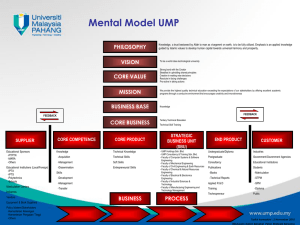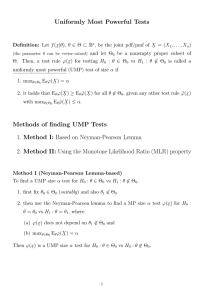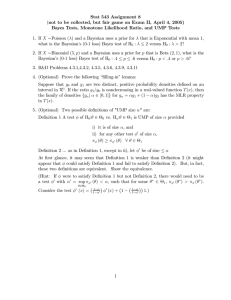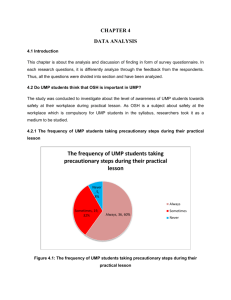NEW MEXICO INSTITUTE OF MINING AND TECHNOLOGY E. J. Workman, President
advertisement
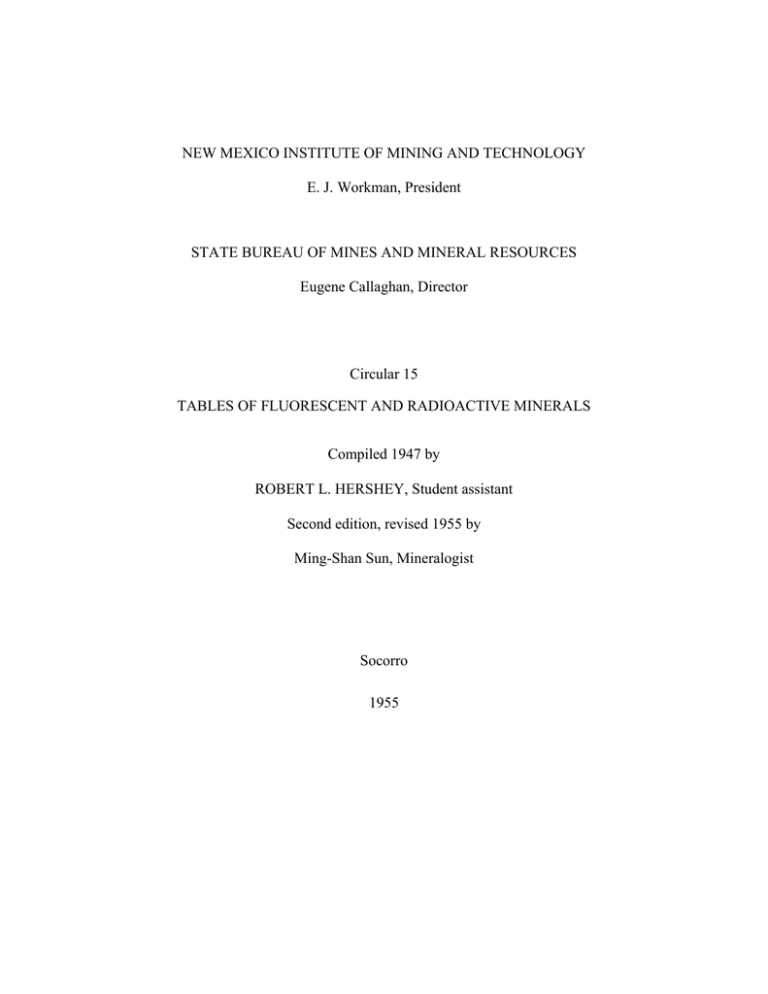
NEW MEXICO INSTITUTE OF MINING AND TECHNOLOGY E. J. Workman, President STATE BUREAU OF MINES AND MINERAL RESOURCES Eugene Callaghan, Director Circular 15 TABLES OF FLUORESCENT AND RADIOACTIVE MINERALS Compiled 1947 by ROBERT L. HERSHEY, Student assistant Second edition, revised 1955 by Ming-Shan Sun, Mineralogist Socorro 1955 FLUORESCENCE During the past few years prospecting in New Mexico has expanded so as to include many minerals besides gold, silver, and the common base metals. The use of fluorescent light has helped to expand the field for both the prospector and the technical engineer. The New Mexico Bureau of Mines and Mineral Resources arranged for the writer to compile the attached tables illustrating the behavior of minerals under ultra-violet light, for the use of prospectors and other interested persons. Some minerals have the property of emitting light of different colors while they are exposed to direct radiation such as ultra-violet rays. If the emission of light lasts only as long as the mineral is exposed to direct radiation, the mineral is said to be fluorescent; if the emission lasts after the direct radiation has been cut off, the mineral is said to be phosphorescent. These tables refer only to the property of fluorescence. The wave lengths of ultra-violet light are measured in Angstrom units (A.U.), which are fractions of a centimeter or more exactly .0000001 millimeter. Rays with wave lengths shorter than 3100 A.U. are short rays. Such rays are obtained from cold quartz tubes. The cold quartz tube is useful because it can be built in a portable unit and can be used very conveniently for prospecting in the field. Rays with wave length longer than 3100 A.U. are long rays. These rays are obtained from heat-generating units such as arc lamps, and are generally used only in laboratory work. Black Bulb, Black Light, and Wonder Light are convenient sources of long waves. 2 There are many manufacturers of the portable or laboratory ultraviolet units. One can find dealers in such units in many big cities. A few such dealers are listed below: (1) W. H. Curtin & Company, P. O. Box 118, Houston, Texas (2) Central Scientific Company, 3555 Whittier Blvd., Los Angeles 23, California (3) Eberbach & Son Company, Ann Arbor, Michigan (4) The Denver Fire Clay Company, 121 North 7th Street, or P. O, Box 497, Albuquerque, New Mexico (5) Fisher Scientific Company, 2850 South Jefferson, St. Louis 18, Missouri (6) Braun Corporation, 2260 East 15th Street, Los Angeles 21, California (7) Ward's Natural Science Establishment, Inc., 3000 Ridge Road East, Rochester 9, New York FLUORESCENT MINERALS Note: (1) Minerals marked with an asterisk (*) are radioactive· (2) A double asterisk (**) indicates that the fluorescent color is not obtainable from the references consulted. (3) Minerals which have been found in New Mexico are capitalized. NAME AGATE (gem) CHEMICAL FORMULA. SiO2 Alexandrite (gem) BeAl2O4 Aluminite Al2O3·SO3·9H2O White ALUNITE K2Al6 (OH)12(SO4)4 White Amber (gem) Hydrocarbon AMAZONITE (gem) KAlSi3O8 AMETHYST (gem) SiO2 Green ANGLESITE PbSO4 Yellow ANORTHOCLASE (Na,K)AlSi3O8 Blue APATITE (See Fluorapatite) COLOR UNDER SHORT RAY Strong green COLOR UNDER REACTION LONG RAY Good ** Fair White Fair Fair Yellow-green to blue-white Dirty pale green Fair Fair Fair Yellow Fair Fair APOPHYLLITE KF·Ca4(Si2O5)4·8H2O Yellowish CaCO3 Fire-red, cream-white Pink, green ARAGONITE AUTUNITE* CaO·2UO3·P2O5·8H2O Strong yellowgreen Strong yellowgreen AXINITE HCa3Al2BSi4O16 Red Red BARITE BaSO4 ** Fair Good ** Good Fair Fair (Generally not fluorescent) Barylite Be2BaSi2O7 Blue Fair BASSETITE* CaO·2UO3·P2O5·8H2O Strong yellowgreen Benitoite (gem) BaTiSi3O9 BERYL (gem) Be3Al2(SiO3)6 BORAX Na2B4O7·10H2O BRUCITE Mg(OH)2 CALCITE CaCO3 Red Good Calcium-larsenite (Pb,Ca)ZnSiO4 strong yellow Good CARNELIAN (gem) SiO2 Dull purple Good CELESTITE SrSO4 White CERUSSITE PbCO3 Pale Blue CHALCEDONY SiO2 Strong green, variable ** Very dark green ** Strong yellowgreen ** Fair Fair Very dark green Fair Greenish Fair ** ** Fair Fair Yellow Fair Good CHALCOCITE Cu2S ** ** ** ** Chrysoberyl (gem) BeAl2O4 CHRYSOPRASE (gem) SiO2 Strong greem Clinohedrite H2CaZnSiO5 Bright orange Colemanite Ca2B6O11·5H2O Cuproscheelite (Ca,Cu)WO4 Dull green Curtisite Hydrocarbon Yellowish green Diamond (gem) Carbon DOLOMITE CaMg(CO3) Fair Fair Pink Good Green Good Good Yellowish green Good ** Fair White, bluewhite Fair ** White Fair. Elaterite Hydrocarbon Brown Fair EPSOMITE MgSO4·7H2O Pale blue Fair EMERALD (gem) Be3Al2(SiO3)6 Very dark green Fair FLUORITE CaF2 FLUORAPATITE (CaF)Ca4(PO4)3 Orange GARNET (gem) 3RO·R2O3·3SiO2 Dull purple Gay-Lussite Very dark green Blue Good Fair Dull purple Fair Na2CO3·CaCO3·5H2O Pink Fair GYPSUM CaSO4·2H2O Green Good Gyrolite H2Ca2Si3O9H2O White White Fair Hackmanite Variety of sodalite Pale pink Pale pink Good HALITE NaCl Vivid red Hexagonite CaMg3(SiO4)3 Red Hiddenite Good Pink Fair LiAl(SiO3)2 Weak orange Pair HYDROMAGNESITE MgCO3·Mg(OH)2·3H2O Greenish Fair HYDROZINCITE 3ZnCO3·3Zn(OH)2 Vivid blue HYALITE (gem) SiO2·nH2O Yellow-green Jade (gem) Ca2(Mg,Fe)5(OH)2(Si4O11)2 Johannite* (Cu,Fe,Na2)O·UO3·SO3·4H2O Kunzite (gem) LiAl(SiO3)3 Lanthanite (La,Di,Ce)2(CO3)3·8H2O LEUCITE KAl(SiO3)2 Meta-torbernite* Cu(UO2)2P2O8·8H2O Characteristic yellow-green Masonite Pb4(PbCl)2Ca4(Si2O7)3 Blue OPAL (gem) SiO2·nH2O Green Good OPAL* SiO2·nH2O Strong bright green Good Ozocerite Hydrocarbon Yellowish PECTOLITE HNaCa2(SiO3)3 Yellow PERIDOT (gem) (Mg,Fe)2SiO4 Dark brown to green Dark green bright streaks Characteristic yellow-green Good Dark green bright streaks Characteristic yellow-green Weak orange ** ** Orange Characteristic yellow-green Fair Fair Fair Fair Fair Good Fair Fair Good Dark brown to green Fair PETROLEUM Hydrocarbon Yellowish green Yellowish green Good PITCHBLENDE Uranium oxide Yellowish green Yellowish green Fair POWELLITE Ca(Mo,W)O4 Yellowish white Priceite 5CaO·6B2O3·9H2O Yellowish PYROMORPHITE (PbCl)Pb4(PO4)3 QUARTZ (gem) SiO2 Strong green Al2O3 Weak red to wine-red Weak red to wine-red Fair Ruby (gem) Al2O3 Weaker than ruby Weaker than ruby Fair Sapphire (gem) SCAPOLITE CaCO3·3CaAl2Si2O8 to NaCl·3NaAlSi3O8 CaWO4 Hydrous U carbonate Moderate yellow Vivid yellow Good SCHEELITE Schroeckingerite* Good Fair White Blue Yellowish green Fair Good Good Yellowish green Good (Dakeite) SELENITE CaSO4·2H2O SMITHSONITE (gem) ZnCO3 Blue-green Green SODALITE 3NaAlSiO4•NaCl Pale pink Pale pink SPHALERITE (gem) ZnS SPINEL (gem) MgAl2O4 Weak red to wine-red STRONTIANITE SrCO3 White Green Strong orange Weak red to wine-red Good Fair Good Fair Fair SULFUR S Thaumasite CaSiO3·CaCO3·CaSO4·15H2O TOPAZ (gem) [Al(F,OH)2]AlSiO4 Yellowish Fair White Fair Weak yellow Fair Characteristic yellow-green Characteristic yellow-green Good TORBERNITE Cu(UO2)2P2O8·12H2O TOURMALINE (gem) H9Al3(B·OH)2Si4O19 TRAVERTINE CaCO3 Vivid red TRONA Na2CO3·HNaCO32H2O Blue Blue TURQUOIS (gem) CuO·3Al2O3·2P2O5·9H2O Mouse-gray Mouse-gray VESUVIANITE Ca6[Al(OH,F)]Al2(SiO4)5 Yellowish Fair Wavellite 4AlPO4·2Al(OH)3·9H2O Green Fair WERNERITE Variety of scapolite Moderate yellow Vivid yellow Good WILLEMITE Zn2SiO4 Green Green Good WITHERITE BaCO3 Yellow Fair WOLLASTONITE CaSiO3 Yellowish orange Zippeite* 2UO3·SO3·H2O Characteristic yellow-green ZIRCON (gem) ZrSiO4 ** ** ** Fair Fair Fair Fair Good Characteristic yellow-green ** Good Fair 9 RADIOACTIVITY Radioactivity is a phenomenon of substances which emit naturally particular radiations. The fundamental nature of radioactivity is such that the atoms of a substance will undergo a transformation spontaneously into atoms of another element. During such transformation, energy is released by the substance in the form of various types of radiation. The major types of such radiations are (1) alpha rays, nuclei of helium atoms; (2) beta rays, negative electrons emitted by the nucleus; and (3) gamma rays, an electromagnetic radiation. A chemical element that exhibits the phenomenon of radioactivity is termed radio-element; minerals that contain these radio-elements are radioactive minerals. If the probability of the atoms of a substance undergoing transformation and emitting various types of radiation is very small, such substance is either stable or weakly radioactive· If such probability is large, the substance will be strongly radioactive. There are three types of instruments for the detection and measurement of radioactivity. The most common and popular type is the Geiger-Muller counter, commonly known as Geiger counter. The second type is the scintillation counter, or commonly known as scintillator. The third type is the ionization chamber which is not commonly used in prospecting. There are various kinds of Geiger counters on the market, such as "Lucky Strike Geiger Counter," "Professional Geiger Counter," "Drill Hole Geiger Counter and Snooper-Geiger Counter." Also there are various kinds of 10 scintillation counters, such as "Royal Scintillator," "Super Scintillator," "Special Scintillator," etc· The price of the counters ranges from less than $50 to over $1,000. The sensitivity of these counters also varies greatly. Usually only the gamma rays can be detected by Geiger counter· The alpha and beta rays are very weak and can easily be stopped by the wall of the counter. A scintillation counter is usually about 100 times as sensitive as a Geiger counter. A prospector can be misled when he retires his old Geiger counter and begins to use a more expensive and sensitive scintillation counter, because many kinds of rocks (not uranium ore) will exhibit a "high" radioactivity in his new scintillation counter. It is important to understand thoroughly the function and sensitivity of a counter, and to interpret correctly the reading of the counter in terms of U3O8 percentage· The following two booklets are good references for those who are interested in prospecting with a counter. (1) Prospecting for uranium, published by the U. S. Atomic Energy Commission and the U. S. Geological Survey· Price 55 cents. (2) Prospecting with a counter, by Robert J. Wright, U. S. Atomic Energy Commission. Price 30 cents. These booklets can be purchased from: (1) Superintendent of Documents, Government Printing Office, Washington 25, D. C. (2) New Mexico Bureau of Nines and Mineral Resources, Campus Station, Socorro, New Mexico. 11 RADIOACTIVE MINERALS Note: (l) Radioactive minerals are mainly uranium and thorium minerals. (2) Minerals which have been found in New Mexico are capitalized. (3) Minerals which contain only a small amount of uranium or thorium as impurities or intergrowths are listed at the end of this table. Many varieties and doubtful minerals are not included. MINERAL CHEMICAL FORMULA Abernathyite K2(UO2)2 (AsO4)2·8H2O Abukulalite (Th,Ca,Y)5 (SiO4,PO4,AlO4)3(O,F) ALLANITE (Th,Ca,Ce)2(Al,Fe,Mg)3Si3O12(OH); U=0.02% Ampangabeite (Y,Er,U,Ca,Th)2(Nb,Ta,Fe,Ti)7O18 ? Andersonite Na2Ca(UO2) (CO3)3·6H2O Anthraxolite A Ni- and U-hydrocarbon; U=0.003% ASPHALTITE Solid bituminous hydrocarbon with 0.001% and up U. AUTUNITE Ca(UO2)2(PO4)2·10-12H2O Bassetite Fe(UO2)2(PO4)2·8H2O BASTNAESITE (Ce,La)CO3F; U and Th present but less than 1% Bayleyite Mg2(UO2) (CO3)3·18H2O Becquerelite 7UO3·11H2O Betafite (U,Ca) (Nb,Ta,Ti)3O2·nH2O ? BETA-URANOPHANE Ca(UO2) (SiO3) (OH)2·5H2O Billietite BaO·6UO3·11H2O Brannerite (U,Ca,Fe,Y.Th)3(Ti,Si)5O16 ? Calciosamarskite (Ca,X,U,Th)3(Nb,Ta,Fe,Ti,Sn)5O15 ? Cappelenite Ba(Y,Ce,La)6B6O12(OH)2(SiO4)3; Th=0.42% Carbonate-fl Contains U up to 0.02% CARNOTITE K2(UO2)2(VO4)2·3H2O 12 Cerite A cerium silicate containing a small amount of Th & U. Chinglusuite A complex silicate with a small amount of Th and rare earths. Clarkeite (Na,K)2-2x(Ca,Pb)xU2O7·yH2O Coffinite U(SiO4)1-x(OH)4x Cordylite (Ce,La)2Ba(CO3)3F2; Th=0.26% CUPROSKLODOWSKITE Cu(UO2)2(SiO3)2(OH)2·5H2O Curite 3PbO·8UO3·4H2O Davidite AB3(O,OH)7 or AB5O7; U=4.4%; Th=0.12%; A= Fe2,U6 Ca,Zr,Th, rare earths; B= Ti,Fe3,V,Cr Delorenzite (Y,U,Fe2)(Ti,Sn?)2O8 ? U=8.7% Dewindtite Pb3(UO2)5(PO4)4(OH)4·10H2O Dumontite Pb2(UO2)3(PO4)2(OH)4·3H2O Epiianthinite yUO3·xH2O Eschynite (Ce,Ca,Fe2,Th)(Ti,Nb)2O6 EUXENITE (Y,Ca,Ce,U,Th)(Nb,Ta,Ti)2O6 Ferghanite U3(VO4)2·6H2O ? FERGUSONITE (Y,Er,Ce,Fe)(Nb,Ta,Ti)O4 Fersmite (Ca,Ce,Na)(Nb,Ti,Fe,Al)2(O,OH,F)6 Formanite (Y,U,Th,Ca)(Ta,Nb,Ti)O4 Fourmarierite PbU4O13·7H2O Fritzcheite Mn(UO2)2(P,V)2O8·8H2O ? GUMMITE An altered Uraninite Hielmite (Y,Fe2,U4,Mn,Ca)(Nb,Ta,Sn,W)2O6 Huttonite ThSiO4 Ianthinite 2UO2·7H2O ? Irinite (Na,Ce,Th)1-x(Ti,Nb)[O3-x(OH)x] 13 Ishikawaite (U,Fe,rare-earths)(Nb,Ta)O4 Johannite Cu(UO2)2(SO4)2(OH)2·6H2O Kasolite Pb(UO2)SiO4·H2O Kahle rite Fe(UO2)2(AsO4)2·nH2O Khlopinite (Y,U4,Th)3(Nb,Ta,Ti,Fe)7O20 ? Kolm U-bearing oil shale Liebigite Ca2(UO2)(CO3)3·10-11H2O Lovchorrite Ce2(TiO3)3·10CaS; O3·2CeF3; U up to .03%, Th up to .7% Lovozerite Complex silicate of Ti and Zr, with a little Th Masuyite UO3·2H2O Meta-Autunite I Ca(UO2)2(PO4)2·2½-6½H2O METATORBERNITE Cu(UO2)2(PO4)2·nH2O; n= 4 to 8 Metatyuyamunite Ca(UO2)2(VO4)2·5-7H2O Meta-Uranocircite Ba(UO2)2(PO4)2·8H2O Meta-Uranopilite (UO2)6(SO4)(OH)10·5H2O ? Metazeunerite Cu(UO2)2(AsO4)·8H2O MICROLITE (Na,Ca)2(Ta,Nb)2O6(O,OH,F); U= up to 10.4%; Th= up to .2% MONAZITE (Ce,La,Th)PO Mosandrite Complex silicate of Na,Ca,Ce, and Ti; Th=.3% Nohlite (Ca,Mg,Fe2,X,U)2(Nb,Zr,Fe3 )3O10; X=rare-earths Novacekite Mg(UO2)2(AsO4)2·8-10H2O Parsonsite Pb2(UO2)(PO4)2·2H2O Phosphuranylite Ca3(UO2)4(PO4)2(OH)4·7H2O Pilbarite Pb·UO3,ThO2·2SiO2·4H2O Pisekite Niobate-tantalate-titanate of U and rare-earths PITCHBLENDE Altered fine-grained variety of uraninite 14 Polycrase (Y,Ca,Ce,U,Th)(Ti,Nb,Ta)2O6 Polymignyte (Ca,Fe2,Y,Zr,Th)(Nb,Ti,Ta)O4 Priorite (Y,Er,Ca,Fe2,Th)(Ti,Nb)2O6; U up to 3·4% Pyrochlore (Na,Ca)2(Nb,Ta)2O6F; U up to 1.4%; Th up to 4.4% Rauvite CaO·2UO3·5V2O5·16H2O ? Renardite Pb(UO2)4(PO4)2(OH)4·7H2O Rinkite Ce2(TiO3)3·10CaSiO3·3CaF2 Rowlandite (Y,La,Ce)4Fe(F,Si2O7)2 ? Rutherfordine UO2CO3 Sabugalite HAl(UO2)4(PO4)4·16H2O Saleeite Mg(UO2)2(PO4)2·8-10H2O SAMARSKITE (Y,Ce,U,Ca,Fe,Pb,Th)(Nb,Ta,Ti,Sn)2O6 Schoepite UO3·2H2O Schroeckingerite NaCa3(UO2)(CO3)3(SO4)F·10H2O Sengierite Cu(UO2)(VO4)(OH)·4-5H2O Sharpite (UO2)6(CO3)5(OH)2·7H2O ? SKLODOWSKITE Mg(UO2)2(SiO3)2(OH)2·6H2O Soddyite (UO2)5(SiO4)2(OH)2·5H2O Swartzite CaMg(UO2)(CO3)3·12H2O Thalenite Y4Si4O13(OH)2 Thorianite (Th,U)O2 THORITE ThSiO4 Thorogummite Th(SiO4)1-x(OH)4x Thucholite Hydrocarbons with uraninite TORBERNITE Cu(UO2)2(PO4)2·12H2O Tritomite A borosilicate of Ce,Y,Ca,Th, and F: Th up to 8.3% 15 Troegerite H2(UO2)2(AsO14)2·8H2O ? Tscheffkinite Silicate of rare-earths,Fe,Mn,Mg,Ca,Al,Ti,Th,and U TYUYAMUNITE Ca(UO2)2(VO4)2·nH2O URANINITE Ideally UO2 URANOPHANE Ca(UO2)2(SiO3)2(OH)2·5H2O Uranopilite (UO2)6(SO4)(OH)10·12H2O Uranospathite Cu(UO2)2(AsO4,PO4)2·11H2O ? Uranosphaerite (BiO) (UO2)(OH)3 ? Uranospinite Ca(UO2)2(AsO)2·10H2O Uvanite U2V6O21·15H2O Vandenbrandeite CuUO4·2H2O Vandendriesscheite PbO·7UO3·12H2O Voglite Ca2CuU(CO3)5·6H2O ? Volborthite Cu3(VO4)2·3H2O; U up to 3.l% Walpurgite Bi4(UO2)(AsO4)2O4·3H2O Xenotime YPO4; U up to 3.6%; Th up to 2.2% Yttrialite Silicate of Th and Y, possibly thalenite with much Th. U up to 0.8% Yttrocrasite (Y,Th,U,Ce)2Ti4O11 ? Zippeite 2UO3·SO3·5H2O ? ZIRCON ZrSiO4; U up to 2.7%; Th up to 13,l% Zirkelite (Ca,Fe,Th,U)2(Ti,Zr)2O5 ? The following minerals may contain some uranium and thorium as impurities or intergrowths: Adamite Zn2(OH)AsO4 Ambatoarinite Carbonate of Sr and rare-earths 16 Ancylite (Ce,La)4(Sr,Ca)3(CO3)7(OH)4·3H2O Baddeleyite ZrO2 Bazzite Silicate of scandium, with Fe,Na, and rare-earths COLUMBITE (Fe,Mn)(Nb,Ta)2O6 Corvusite V2O4·6V2O5·nH2O CYRTOLITE Altered zircon Fischerite Al2(OH)3PO4·2½H2O FLUORITE CaFO3 purple fluorite in New Mexico usually contains a small amount of U Kalkowskite Fe2Ti3O9 ? OPAL SiO2·nH2O; some green varieties in New Mexico may contain up to .10% U3O8 PYROMORPHITE Pb5(PO4)3Cl SCAPOLITE (Na3Ca)4Al3(Al,Si)3Si6O24(Cl,CO3,SO4) TANTALITE (Fe,Mn)(Ta,Nb)2O6 Turanite Cu 5(VO4)2(OH)4 ? Volborthite Cu3(VO4)2·3H2O ? REFERENCES Dake, H. C., and DeMent, Jack (1941) Fluorescent light and its application, Brooklyn, N. Y., Chemical Publishing Co., 116-139. Dana, E. S., and Ford, W. E. (1932) A textbook of mineralogy, 4th ed., New York, John Wiley & Sons. Frondel, J. W., and Fleischer, M. (1955) Glossary of uranium-and thorium-bearing minerals, 3d ed., U, S. Geol. Survey Bull, 1009-F. Land, N. A. (1944) Handbook of chemistry, 5th ed., Sandusky, Ohio, Handbook Publishers. 17 Northrop, S. A. (1944) Minerals of New Mexico, Albuquerque, N. M., Univ. of New Mexico Press. Realey, J. A., and Grant, J. (1939) Fluorescence analysis in ultra-violet light, 3d ed., New York, D. van Nostrand Co., 266-277. Rose, R. B. (19)46) Radioactive exploration, Mining World, v 8, n 9, 46-48.
